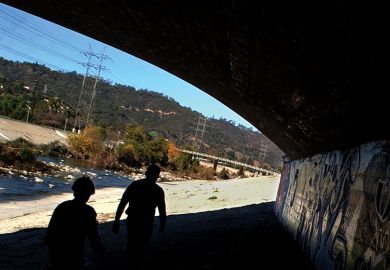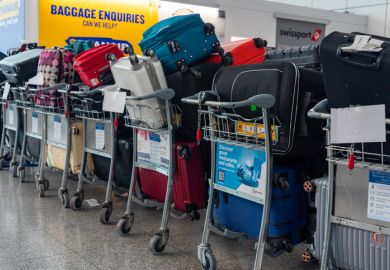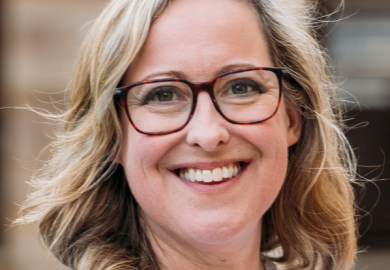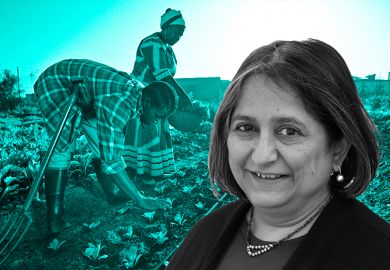When Bradley Garrett began to explore the world of doomsday survivalists, he expected to meet a collection of oddballs and misfits driven half-crazy by the notion that an apocalyptic event was imminent.
“I thought they would be paranoid, anxious and fearful – in fact, they were very peaceful, almost Zen-like,” recalls Garrett, who recently took up a position as an assistant professor in social geography at University College Dublin. His new book, Bunker: Building for the End Times, recounts his encounters with “doomsday preppers” across the world, as well as with the growing numbers of entrepreneurs making money from the apprehension that social collapse is just around the corner.
“These people are occupied by disaster and calamity, but they have managed to find some sense of peace by preparing for the worst,” says Garrett, whose research took him to bunkers and survivalist communities across the US, Europe, Australia and, especially, New Zealand – now a preferred destination for internet billionaires keen to build a bunker.
Many survivalists were affluent and professionally successful, too. “One guy I met – Drew Miller – was a retired air force colonel with a Harvard PhD – he was brilliant,” notes Garrett of the owner of a secure 50-acre compound located deep in the forests of West Virginia who offers access to his fort for $1,000 (£800) a year. Miller bought “a large amount of land and fortified it, so families could repel attacks from marauding hordes that would roam the country after the Fall”. Black oil drums were set up in a field, “where they would burn the dead bodies in case of an epidemic”.
Although Garrett is unsympathetic to the more outlandish reasons why people became survivalists, he tells Times Higher Education that he nevertheless developed a grudging respect for those he interviewed. “Their anxieties were often not about climate crises, nuclear fallout or more plausible catastrophes, but more bizarre theories,” he says. One man was obsessed by the notion that a planet hidden behind the moon would soon emerge to cause deadly flooding on earth – and “those stranger ideas tended to displace more obvious threats”. Yet his interviewees' need to investigate (even if generally via conspiracy theory websites) and take action against an apparently looming disaster “chimed with me”, continues Garrett. After all, academics also explore and evaluate social problems before suggesting their solutions, he reflects; Garrett himself “spend[s] a lot of time reading philosophised studies about specific concerns or existential threats”, and he points to many other well-known academics – from Stephen Hawking to the French Marxist Paul Virilio – who have expounded on mass extinction and social collapse.
So although he does “take survivalists to task in the book”, he also stresses that, “for them, prepping is practical and necessary for the collapse they think is coming…As an ethnographer, it is not my role to inform them that their worldview is wrong – I want to empathise with their position, but then reframe it through my background as an academic.”
Garrett’s book also forces readers to reassess other assumptions about bunkers and those who own them. These edifices are not, he argues, merely relics of the Cold War era, when government officials or terrified families grimly hoped to survive a nuclear blast before restarting society – although that is an important part of the story. He visited some of the 23 shelters under West Berlin that once had space for 28,000 of the city’s 3 million citizens, as well as the astonishing Burlington bunker in Wiltshire, a once top-secret, bombproof complex as big as 25 football pitches that, 20m deep, could have housed 4,000 people for months.
For Garrett, however, bunkers are also a very modern phenomenon. Desired not only by the super-rich (Donald Trump kitted out a luxury bunker at his Mar-a-Lago estate in Florida in 2004), they are now also in demand among many affluent middle-class Americans. Garrett visited one survivalist development near Dallas, Texas, where luxury semi-subterranean condominiums are selling for between $500,000 and $1.5 million. This is the Trident Lakes complex, billed as a “five-star playground” offering the highest level of preparedness on the DEFCON scale used by the US armed forces. It will eventually have some 600 properties, as well as a golf course, spa, restaurants and retail outlets, not to mention an underground school to help sustain a self-sufficient community.
In Australia, meanwhile, Garrett met contractors installing wildfire safety bunkers, airtight units buried 10m beneath the ground that would allow up to 12 people to survive for a few hours while flames burn overhead. Each unit cost $34,000.
At a deeper level, Garrett sees the bunker as “a kind of metaphor or a way of thinking about the world. It’s about putting things in place, about personal security.” As such, the spaces do not necessarily need to be underground or even indoors.
Instead, the trend for protective sanctuaries should be understood more widely. For example, a third of all houses built in the US in 2000, Garrett tells us, were in gated communities, a similar type of protective enclave. Meanwhile, his brother – a building contractor in California – informs him about the concrete-walled panic room he was building in the centre of a client’s house, hoping that the “hardened space” will allow him to weather a low-level event, such as a blackout, for three days, until the chaos subsides. “When you’re building a house worth millions,” the home’s owner told Garrett, “what’s another 25 to 30 grand to make sure the closet space you’re already going to have is multifunctional?”
While many preppers fear imminent catastrophe, Garrett believes that many more are compelled to act by a growing sense of lower-level disquiet. People are looking “to burrow, to disappear, to feel sheltered from the modern world’s invasive din”, he writes in Bunker. This enthusiasm for “underland sanctuaries” is also reflected in the trend for city planners to go downwards rather than upwards: Singapore, given the pressure on space, is considering a new “subterranean master plan”, with shops, offices, pedestrian walkways and housing all buried deep underground. In London, the “mega-basement” or "geoscraper" has become the must-have addition for multimillionaires in Kensington and Chelsea, complete with home cinemas, wine cellars, swimming pools and even tennis courts. “Just as the skyscraper might be considered the architectural form that defined the 20th century, its foil, the geoscraper…might come to define the coming age of turmoil,” writes Garrett.
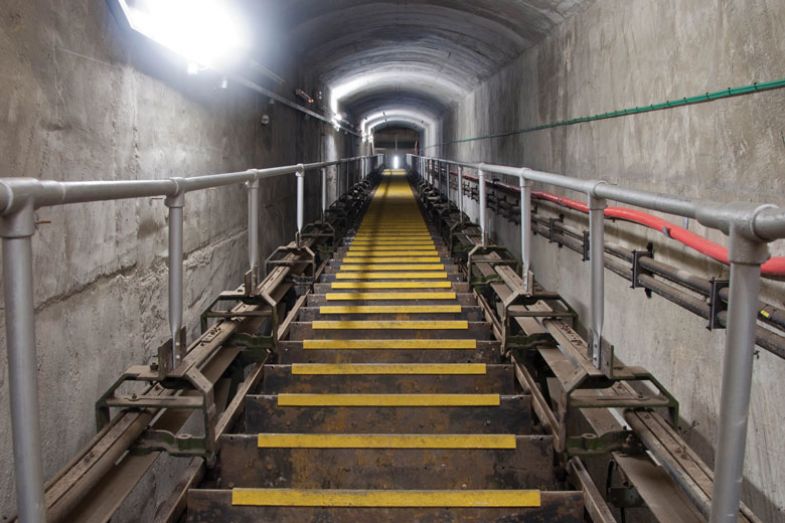
Any vague sense of looming dread driving these survivalists, however, has recently been replaced by a more palpable threat: Covid-19. Those who mocked preppers for stockpiling food and supplies are having to reassess their attitudes to individuals who had readied themselves for precisely this kind of crisis, Garrett points out, adding that “the cities where we live now look like dangerous places in catastrophes”. People’s wish to cut themselves off from society is also more understandable, with some revelling in the lockdown-enforced break from the hassle of long commutes, international travel and continual socialising.
“The utopian idea that everything and everyone would be connected internationally or that we need to travel and endlessly network has been exposed as a fallacy,” claims Garrett. “I don’t think it’s a bad thing if the pandemic helps us to focus on the place where we are, rather than always having to travel to academic conferences or fly off on holiday to take that photo for your Instagram profile.”
For his own part, Garrett appears to have embraced a lockdown lifestyle that looks similar to that imagined by many survivalists. He spent the first few months of quarantine with his partner and his mother, who was recovering from a spinal injury, on the outskirts of his native Los Angeles, but has now moved some 80km west to a cabin in the San Bernardino Mountains, close to the spectacular Mojave Desert. There, he has been “chopping wood and growing food”, and he contrasts his new rustic existence with the cramped apartments in London, where he did his PhD, and Sydney, where he used to live.
Garrett was previously known for his enthusiasm for large cities and, more precisely, for visiting the hidden and sometimes wondrous spaces above and below them. For his doctoral research, he travelled with a group of urban explorers in London, whose illicit “place hacking” expeditions to the top of the Shard skyscraper, abandoned buildings and off-limits parts of the Underground saw him spend time in court and prison, although charges of conspiracy to commit criminal damage were eventually dropped in 2015.
“Being put on trial along with your project participants as the head of a supposed conspiracy”, Garrett reflects now, “is every ethnographer’s worst nightmare. Although we all walked away relatively unscathed at the end of the two-year ordeal, we felt like we’d already served out a sentence after suffering years of stress and anxiety. We all lived with stringent bail conditions and, in my case, I had my passport confiscated, which was utterly draconian, given the charges.”
Yet Garrett also feels he has been able to build on the experience in his work. “During the trial, the University of Oxford asked me to join the research ethics committee, which was a brilliant move on their part since I understood first-hand the importance of the process. I went on to serve as the chair of ethics in geography at the University of Southampton and have published numerous academic articles on the topic, including one in 2018 about how there is no strict correlation between law and ethics.”
Furthermore, Garrett is committed to “the importance of doing research with stigmatised, under-represented and overlooked social groups, particularly where their practices transgress legal boundaries. As academics, it is our job to shed light on overlooked forms of expression. In fact, I would argue that the whole purpose of the ethics process is to facilitate transgressive research, because that’s usually where we learn the most.”
For the moment, however, Garrett and his partner have left what he calls “the human Petri dish” of the city for the wilderness. “Many LA residents have been emboldened by their ability to live and work remotely,” he reports. “They’ve been told networking is absolutely vital, but they found that this isn’t true.”
Yet the coronavirus pandemic has also shown that some of the more popular theories propagated by doomsday preppers and, more pertinently, the “dread merchants”, who sell properties and supplies at inflated prices, are unconvincing. The common slogan “72 hours to animal” – suggesting that even mild-mannered people may turn wild within days – looks particularly wide of the mark. Hence, might the resilience of society in the face of calamity – despite a few early wobbles – suggest that preppers are wasting their time and money?
“I’d read [American writer] Rebecca Solnit and her theory of ‘disaster solidarity’, in which people come together to confront an external threat,” Garrett replies, “so this is what I expected to happen.” Furthermore, the survivalists he interviewed would probably adopt a range of attitudes to the displays of community and altruism seen during lockdown. “Some are clear that when disaster strikes they are locking the doors of their bunkers and whatever happens outside is not their responsibility; but, for others, it is a more hopeful endeavour,” with their preparations designed to provide for others in their communities and to form a basis for rebuilding society.
It is safe to say that the coronavirus lockdowns have demonstrated that humans are not built for the social isolation that many doomsday preppers are ready to embrace. “It has shown that we are unable to withstand loneliness for long periods,” as Garrett puts it, “so holing up in a bunker for three months with food rations has taken on a different sheen.”
Nonetheless, it seems certain that survivalism will accelerate after the pandemic given the new awareness of disaster and the need to plan for it. And that, according to Garrett, is a good thing. “We’re seeing a new appreciation for staying put, slowing down and building up our finances. We had accepted that our lives would always speed up, but we are heading in a different direction.”
Bradley Garrett’s Bunker: Building for the End Times was published this week by Allen Lane.
POSTSCRIPT:
Print headline: Bunker mentality
Register to continue
Why register?
- Registration is free and only takes a moment
- Once registered, you can read 3 articles a month
- Sign up for our newsletter
Subscribe
Or subscribe for unlimited access to:
- Unlimited access to news, views, insights & reviews
- Digital editions
- Digital access to THE’s university and college rankings analysis
Already registered or a current subscriber?

